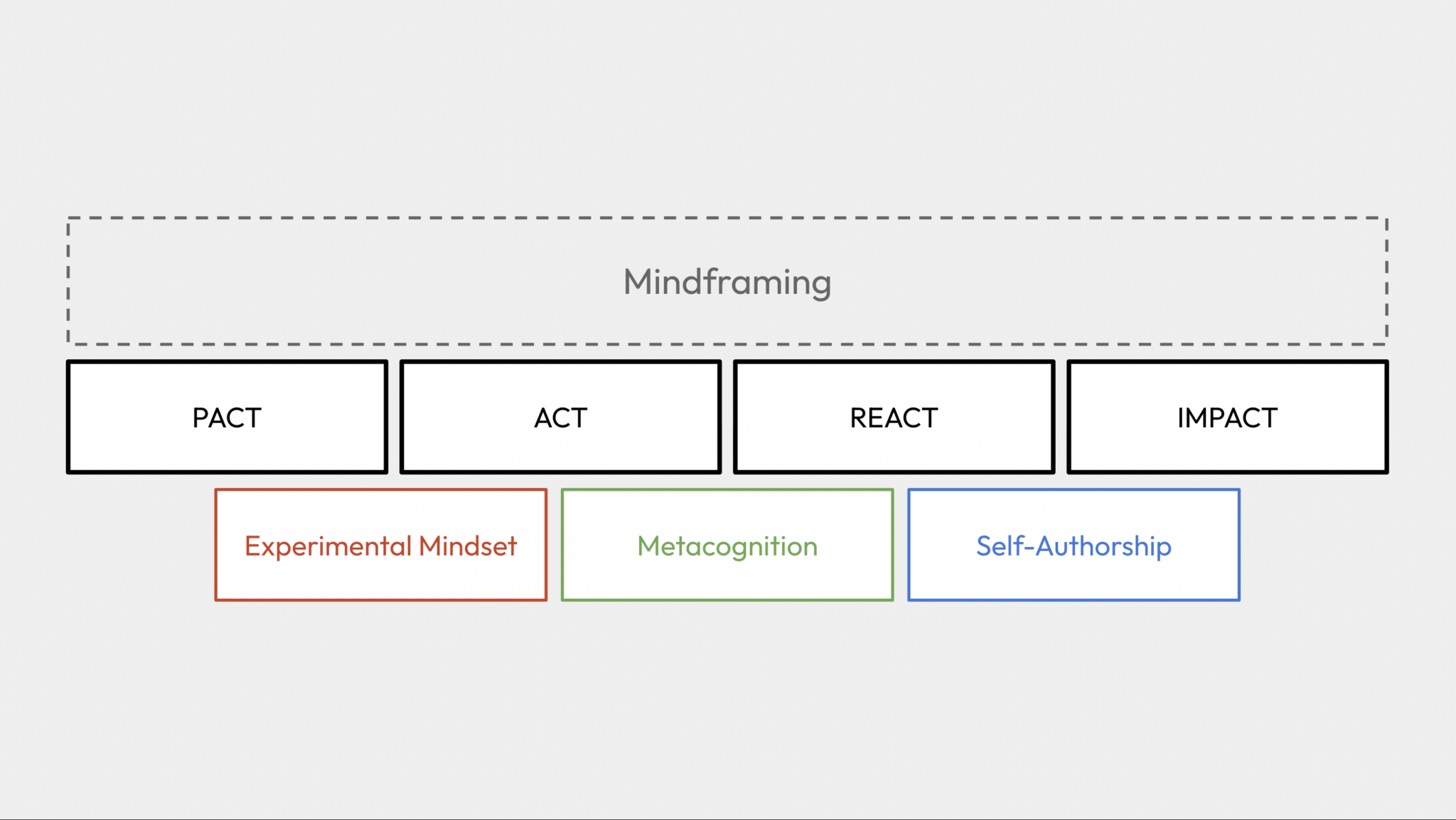The problem with most productivity systems is the absence of mindfulness. It’s all about getting things done, versus asking yourself why and how best to get things done. But there’s no point getting something done if you damage your mental health in the process. There’s also no point getting something done if this was not the right thing to spend your energy on in the first place.
Mindframing is a method that’s mindful of the way we think, feel, and work. Instead of blindly cranking tasks, it’s about creating growth loops with constant feedback so you can be mindful of the way you achieve your goals. Mindframing is about continuous learning, personal growth, and mindful productivity. It’s about being the best you can while acknowledging the inherent imperfections of your humanity.
This is a short guide covering all the articles about mindframing so you can explore the concepts in order and apply them to your own mindful productivity routine.

1. Overview
First, you want to read this short overview of mindframing, covering its origins and general principles. This was the very first article published about the mindframing method.
Update: The mindframing method has become the basis for a book! Order your copy of Tiny Experiments to learn how to apply those principles.
2. Key mindframes
Central to mindframing are three key mindframes which you need to master:
- Experimental mindset. Read this article to learn how this mindset can change your relationship to uncertainty, and what type of experimentalist you are.
- Metacognition. Then, read this one to learn about the tools and methods you can use to “think about thinking”, the second major mindframe you need to master. You will learn how to regulate your metacognition through planning, monitoring, and evaluating your creative and intellectual work.
- Self-authorship. Finally, read this to learn how you can create a coherent belief system and how you can shape your identity. This article includes a list of activities to develop your self-authorship.
Once you have learned about those key mindframes, you can move onto using an integrated system which uses all three of them.
3. PARI cycle
PARI stands for Pact, Act, React, Impact. It’s a simple system to use the three key mindframes and turn goals into growth loops. This article is a complete overview of the PARI system, which focuses on long-term ambitions achieved through repeatable actions.
4. Applications
By now, you should be familiar with the concepts of the mindframing method and the logic behind the PARI system. If you want to explore ways to apply mindframing in your daily work, you can read additional articles exploring some of the applications of mindraming.
- The Power of Personal Experiments
- SMART goals are not so smart: make a PACT instead
- Roam Research and mindframing for world curation
Mindframing is extremely flexible and can be used for anything from writing essays, learning how to code, or becoming a better runner. Tweak it, combine it with other methods, make it your own.
